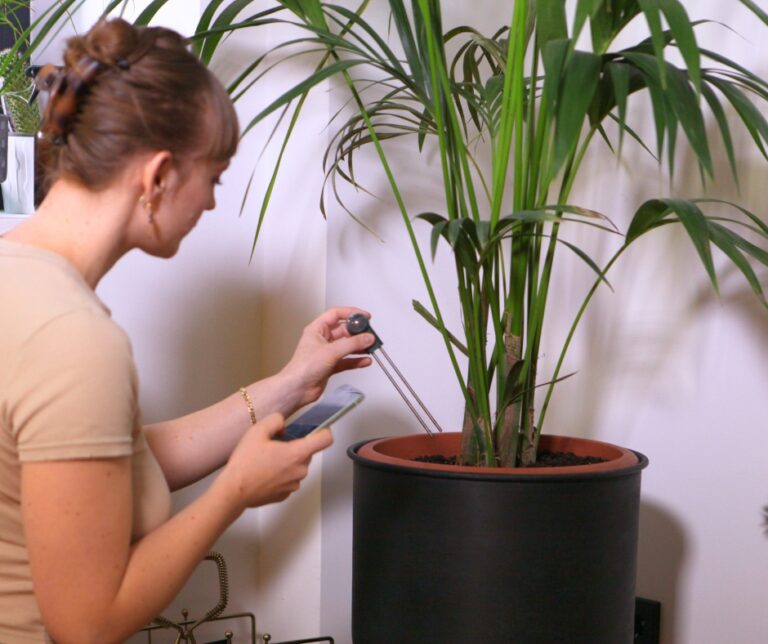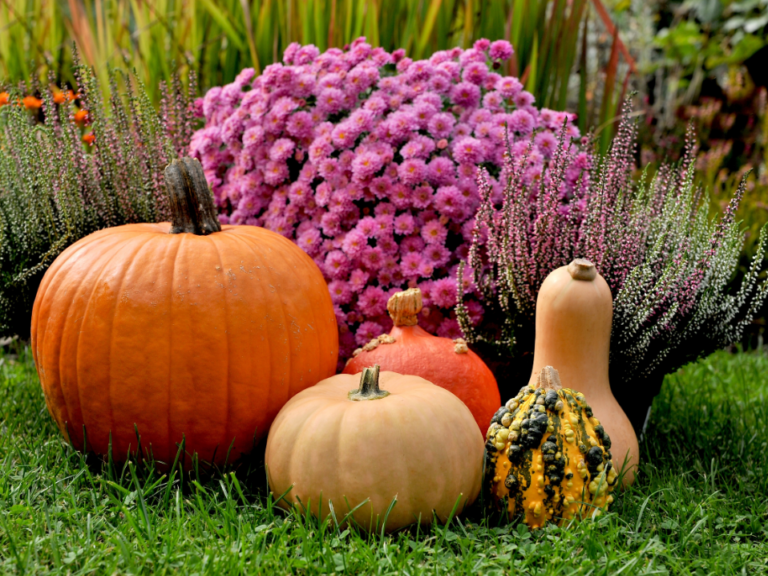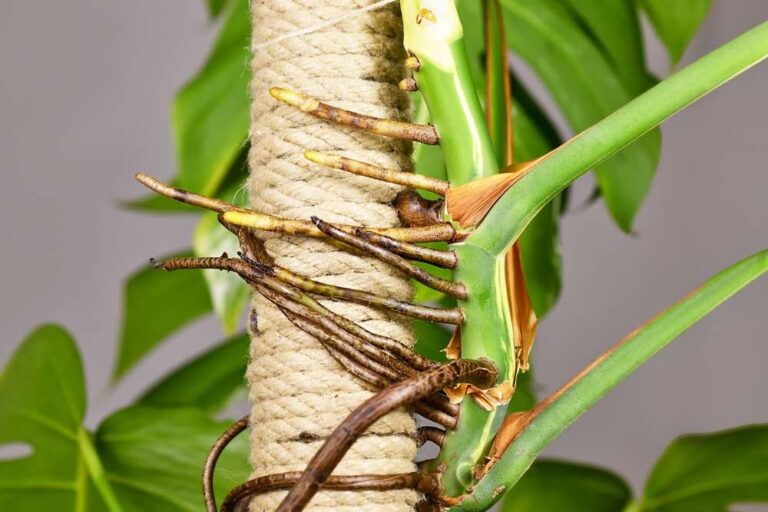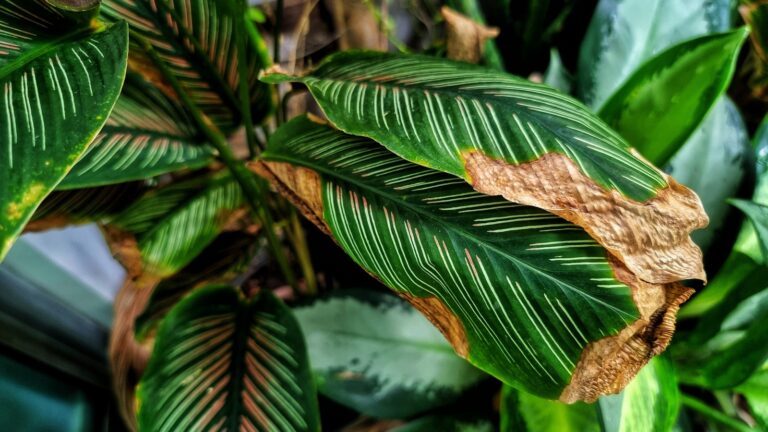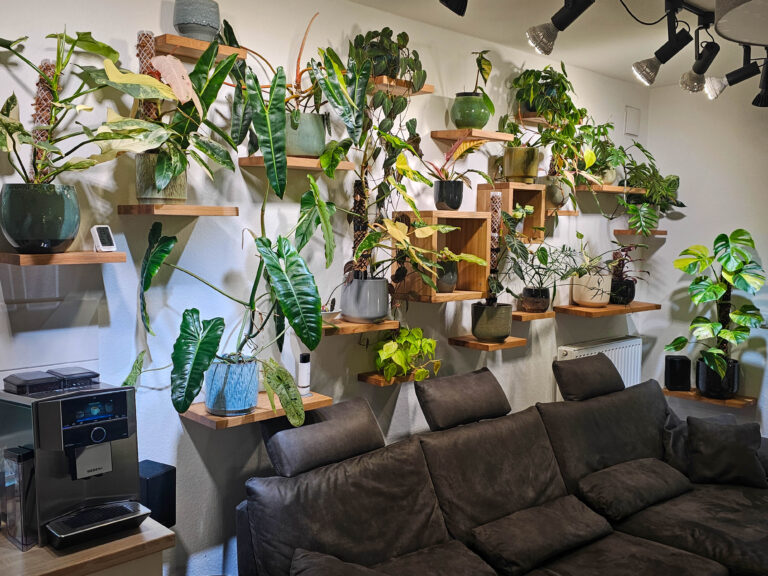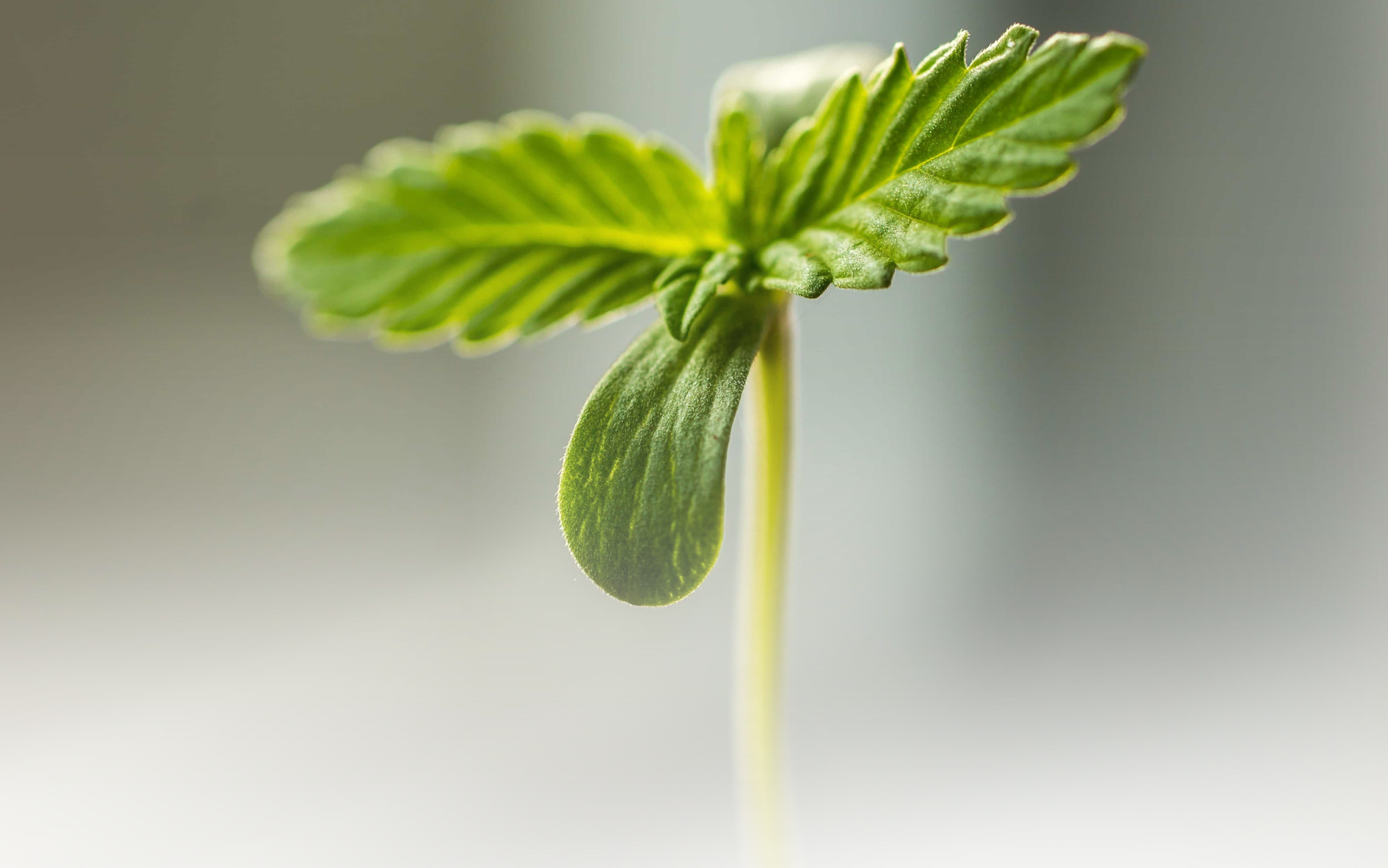
Once your cannabis plants have germinated, they enter the seedling stage when the cotyledons emerge from the seeds. Cotyledons are the first two small leaves that appear on some plant seeds. Flowering plants, including cannabis, can be classified as monocotyledons when they have only one cotyledon, such as grasses, corn, or palms. In contrast, cannabis is a dicotyledon plant, meaning two cotyledons emerge from its seeds, marking the start of the seedling stage.
At this stage, consider your plant as a baby, making it highly sensitive to any kind of stress. The requirements for the seedling stage are unique compared to other growing stages. Let’s explore why this stage is crucial for cannabis cultivation.
Soil Moisture
When cannabis germination begins, the first part to emerge is the radicle, which plays a crucial role in developing a strong root system. For optimal growth, the soil should be moist but not wet. During this stage, the radicle primarily grows downward, seeking water in the soil to support the plant’s development. It’s important to avoid overwatering and to let the soil dry slightly between waterings. Managing water levels can be challenging, as cannabis seedlings are particularly sensitive to moisture conditions during this phase. The FYTA Beam and App can help you manage soil moisture at every stage of your cannabis plants’ growth.
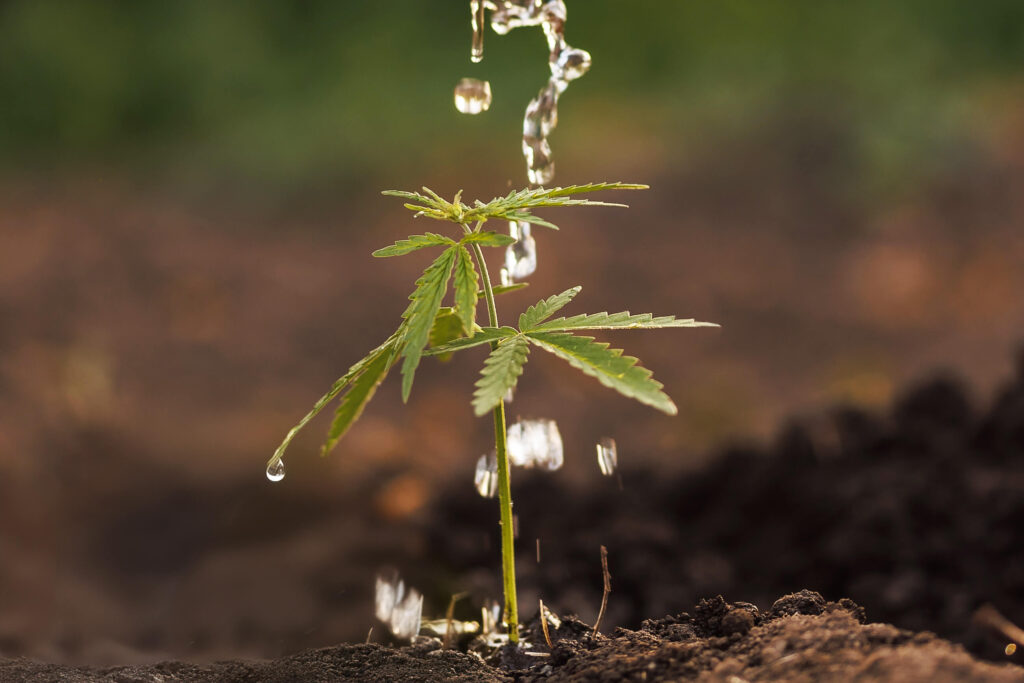
Container
If you’ve chosen to germinate your cannabis seeds using the wet paper towel method, you can transfer your germinated seed into the soil once the radicle (the embryonic root) is sufficiently long. Sometimes, you might notice the entire seedling has emerged from the seed; don’t worry, this is perfectly normal. It simply indicates that you need to transplant the seedling into the soil promptly, as the cotyledons (seed leaves) require light for photosynthesis.
When selecting a container for your cannabis seedling, opt for something small that won’t easily retain excess moisture. This is crucial because seedlings are sensitive to overwatering. Remember to let the soil dry slightly between waterings, as cannabis seedlings dislike wet conditions. It’s also essential to have a drainage hole in your container to ensure proper water management and prevent root rot.
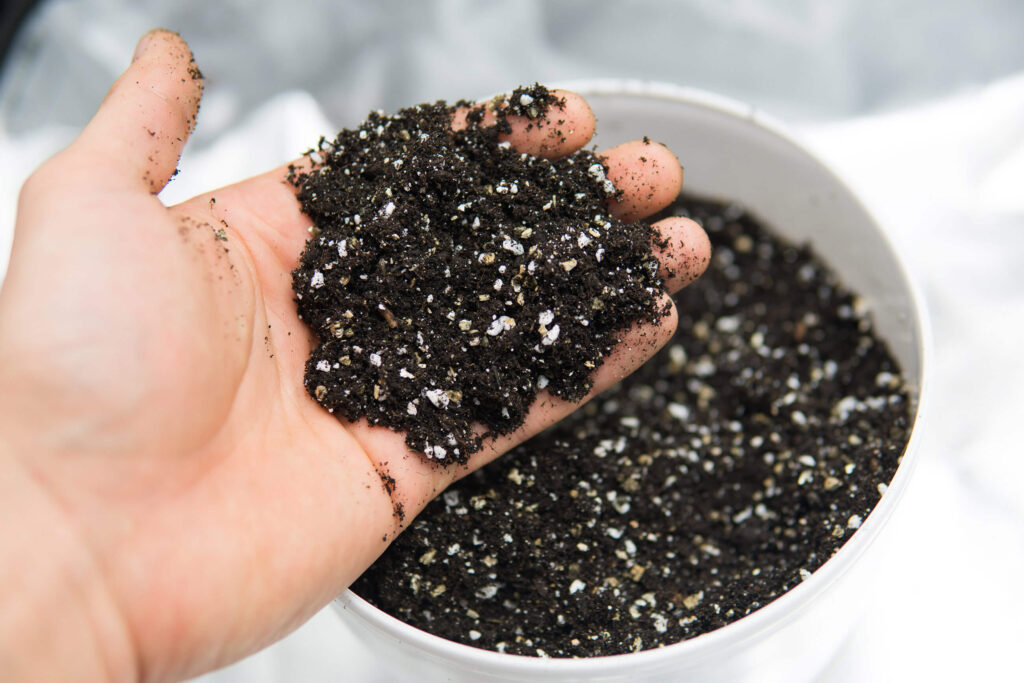
Soil
When choosing soil for your cannabis seedlings, it’s crucial to consider their minimal nutrient requirements. For the first two weeks, opt for soil with low nutrient content and a pH between 6-7. These soils are similar to those used for aromatic plants and are often labeled as seedling or cutting soil.
Popular alternatives include:
- Non-prefertilized coco fiber-based soil
- Rock wool
- Other inert media
If using soil, avoid adding fertilizer and water minimally. When planning to transplant, allow the soil to dry beforehand. Always follow the watering guidelines and adhere to product recommendations from your chosen brand if using inert media such as non-prefertilized cocofiber, or Rock wool.
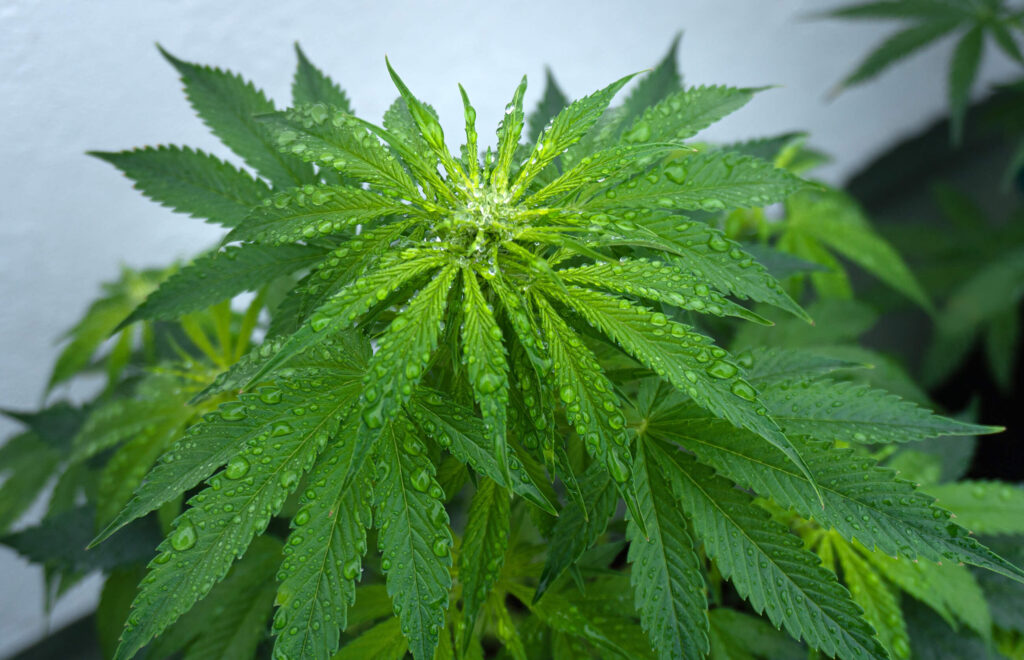
Air humidity
Relative humidity, which changes depending on temperature, must be particularly high during the seedling stage, ideally between 65 % and 90 % for the first two weeks. This elevated humidity allows the plant to focus more on development, producing new leaves and expanding its root system, rather than maintaining optimal water balance.
To increase humidity around cannabis seedlings, many growers employ various techniques. Some cover their seedlings with transparent plastic cups to create a mini-greenhouse effect. Others prefer to invest in a humidifier for more precise control. Regardless of the method chosen, it’s always beneficial to use a hygrometer to monitor humidity levels in the seedling’s environment accurately.
Temperature
The ideal temperature for cannabis seedlings ranges from 22°C to 25°C (72°F to 77°F). It’s advisable to start seedlings indoors to maintain this optimal temperature range. Sudden temperature drops can damage the fragile seedlings, while high temperatures can reduce relative humidity. This drying effect can harm the seedling’s environment and potentially cause burns on the cotyledons and primary leaves. Maintaining a consistent, moderate temperature is crucial for healthy cannabis seedling development.
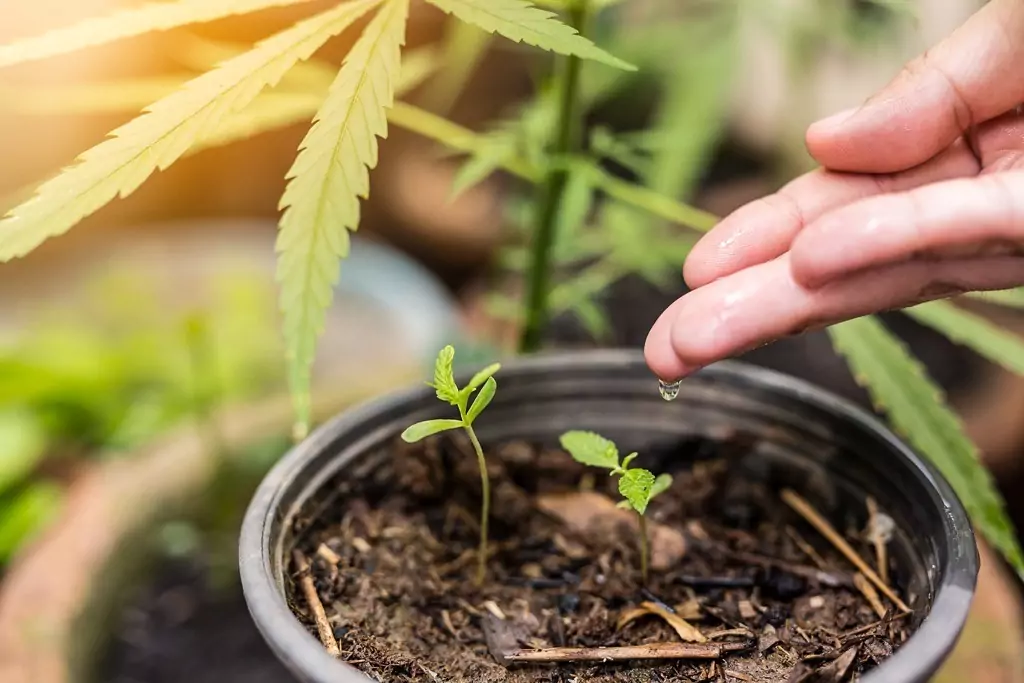
Light
Cannabis seedlings thrive on a light schedule of 18 hours of light and 6 hours of darkness. The light intensity should be maintained between 100 and 300 μmol/s. When growing on a windowsill, be aware that your seedling may elongate significantly as it reaches for light. For indoor cultivation, consider using lights with a high blue light spectrum (400-500 nm), which promotes root growth during the seedling stage. Compact Fluorescent Lamps (CFLs) are an excellent option for seedlings, though some LED lights can also provide a spectrum similar to spring sunlight, which is ideal for this growth phase.

